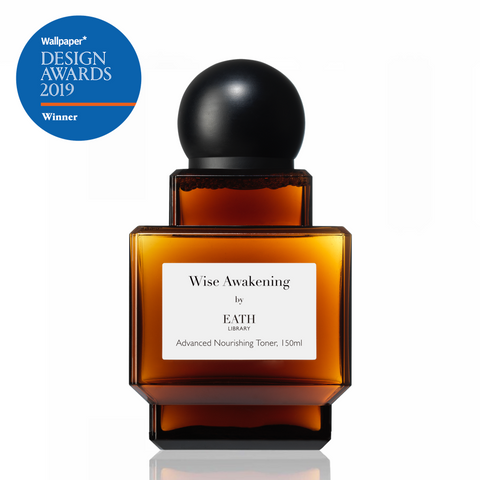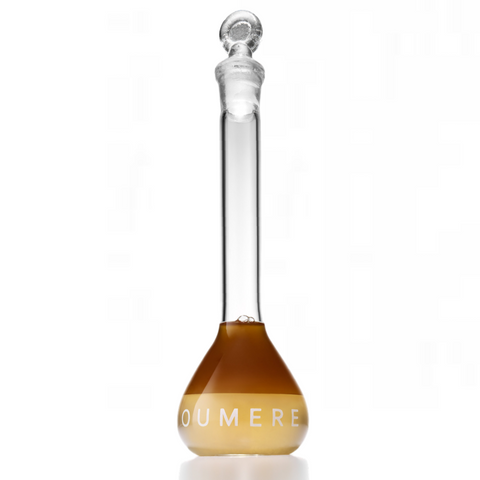Free shipping for HK orders HK$600+
What Is Toner and What Are Its Benefits?
November 11, 2020
We always hear terms like toner, softener, hydrating mist, treatment lotions, and essences, but what are they really? What are their true purposes, and what are their differences?
Product Recommendation
AGENT NATEUR
holi(water) Hyaluronic Pearl & Rose Essence <- Click to shop
____________________________________
Toner - What Is It Really?
First of all, we suggest not to pay too much attention to the wording of it. There is no universal standard as to how to classify such product——even with the same ingredients, it may be called a toner or softener by Brand A, but Brand B may add a misting pump to the same sort of formula and call it a hydrating mist, and Brand C may make the product slightly thicker and call it a treatment lotion or essence. More often than not, product names are worded just to make the product more appealing with no substantial difference, which is why we suggest rather than focusing on the name, try to look at the ingredients and see if they suit your needs instead.
In the past, toners used to contain high concentrations of alcohol to help remove oil from the skin, which we all know now is too astringent and drying as it can damage the skin’s lipid barrier. However, toners that are on the market these days, whether they are called a toner, softener, hydrating mist, treatment lotion, or essence, mostly sit in a hydrating base with added properties to address different skin concerns, and many of them are alcohol-free. Therefore to simplify things, let’s call this step between cleansing and serum “toner”.

Product Recommendation
TWELVE BEAUTY
Ultra Revitalising Elixir <- Click to shop
____________________________________
What Are Its Benefits?
Benefit ① Balance Skin's pH
First of all, toner is important in helping with the skin’s pH. Keeping the skin at the optimal pH of 5-6, is the key too healthy skin, yet many face cleansers, especially soap, often have an alkalinity well over 9. In fact, even tap water in certain areas has a pH of around 8 and can raise the skin’s pH, which can damage the skin’s barrier, making it more vulnerable to pollutants, bacteria, and infections. By using a toner after cleansing, the skin can be brought back to its naturally slightly acidic state.
Benefit ② Prep Skin For Better Absorption
Think about how you wash the dishes. When you squeeze dish-washing liquid to a dry sponge, it won’t get distributed evenly on the sponge, and you won’t be able to clean the dishes effectively. The skin after cleansing is like that dry sponge. Without that extra water in the skin, all the skincare products you put on the skin afterwards won’t get absorbed and distributed in the skin; whereas if you put serums, oils or moisturizer on damp skin, they will be able to penetrate much better.

Product Recommendation
EATH LIBRARY
Wise Awakening Advanced Nourishing Toner <- Click to shop
Benefit ③ Fill The Skin With Water Molecules
Serums and some moisturisers are usually filled with humectants, such as hyaluronic acid. These humectants work by pulling water from its surroundings to the epidermis (the top layer of the skin). When the air’s humidity is over 70%, they can pull water vapour from the air to hydrate the skin. Nevertheless, when the humidity is low, these humectants will instead draw water from the dermis (the second layer of skin) to the epidermis. On the other hand, moisturizers usually consist of occlusive ingredients, which basically form a physical barrier on the skin to lock in moisture. This essentially means, you will have to replenish the skin with actual water molecules by using products such as toners that usually sit in a water-based formula, be it water itself, aloe vera leaf juice, green tea, or hydrosols, so that the humectants can actually have something to draw from, and the occlusives have water to lock in.
Benefit ④ Provide Additional Benefits
Besides water molecules, toners these days are often enriched with other ingredients such as botanical extracts and vitamins (although typically in less concentrations than serums), and depending on the formula, they can provide antioxidant, anti-inflammatory, soothing, calming, or brightening benefits.

Product Recommendation
MARIE REYNOLDS LONDON
Hydr8 Misting Veil™ <- Click to shop
____________________________________
When and How Exactly Should It Be Used?
Trans-epidermal water loss can happen straight after cleansing, so it is best to apply a toner within 60-seconds. And don’t wait for it to completely absorb or dry down. The next product, most likely a serum, should be applied when the skin is still wet from the toner, because most molecules penetrate the skin better when it is wet, so applying active ingredients immediately after toner will deliver better results.
After a serum and before an oil, you may also want to lightly pat or mist a layer of toner. This way, the oil will be able to penetrate better into the skin, and better yet, it will feel less heavy on the skin.
Contrary to popular belief however, toner should not be seen as an extra cleansing step. A lot of people like to pour some toner on a cotton pad and keep wiping it up and down, left to right. Yet dragging a cotton pad around the skin day in and day out will inevitably damage the skin and create unwanted lines in the future. Just cleanse properly and carefully when you're actually cleansing!
Product Recommendation
OUMERE
No. 9 Exfoliant <- Click to shop
____________________________________
Which Kind Shall I Use?
Now, as said before toner always sit in a water-based formula, be it water, aloe vera leaf juice, green tea, or hydrosols. Depending on the formula, it can also contain glycerin, botanical extracts, sodium hyaluronate, antioxidants, vitamins, and and anti-inflammatories. While fatty alcohols like benzyl, stearyl, cetearyl and cetyl alcohols are great for the skin, we do recommend avoiding anything with drying alcohol, which usually appear as Alcohol, Alcohol Denat., Isopropyl Alcohol, Methanol and SD Alcohol in a product’s ingredient list.
For sensitive skin, choose one with skin-calming botanicals, such as aloe vera, cucumber, calendula, gotu kola, allantoin, and oat silk; for added brightening effect, look for ingredients like rose, jasmine, niacinamide, sodium ascorbyl phosphate, pitaya, and pearl.
Where as for acne and rough skin, as well as skin with large pores, one that has AHAs, BHAs and PHAs can help exfoliate dead cells, improve skin texture, reduce acne, and clear pores.
For extra nourishing and anti-aging benefits, or for those that want to simplify their routine, a bi-phase formula that consists of both water-soluble and oil-soluble ingredients may be ideal to hydrate and nourish at the same time.

Product Recommendation
OUMERE
Serum Bioluminelle™ <- Click to shop
Also in The Journal

The Anti-Aging Gold Standard: How Retinol Reshapes The Skin
November 12, 2025
Learn why retinol is the gold standard for anti-aging, how it works, what similar ingredients exist, and some common myths and misconceptions.

The Gut-Skin Connection: The Path to Healthy Skin
October 26, 2025
Acne, eczema, rosacea, and sensitivity can all be linked to the gut health, and even gluten? Learn all about the connection between the gut and the skin.

The Secret to Reversing Skin Aging! How Growth Factors & Peptides Help Turn Back the Clock
October 13, 2025
Tired of wrinkles, sagging skin, lack of elasticity, inflammation, dryness, and even hair loss? Learn how growth factors and peptides reverse skin aging.
+Recent Articles
-
The Anti-Aging Gold Standard: How Retinol Reshapes The Skin
November 12, 2025
-
The Gut-Skin Connection: The Path to Healthy Skin
October 26, 2025
-
The Secret to Reversing Skin Aging! How Growth Factors & Peptides Help Turn Back the Clock
October 13, 2025
-
The Best Ways and Times to Take Different Supplements
August 19, 2025
-
Luxury vs. Budget-Friendly Skincare Products——What Are Their Differences?
August 06, 2025
-
How to Prevent and Improve Post-Inflammatory Hyperpigmentation (PIH)
July 10, 2025
-
How to Prevent and Improve Post-Inflammatory Erythema (PIE)
July 08, 2025
-
The Ultimate Cleansing Guide to Improve Skin Conditions
June 03, 2025
-
Do You Have Sugar Face? How Does Sugar Affect Our Skin and Appearance?
May 20, 2025
-
Do You Have Gluten Face? How Does Gluten Affect Our Skin and Appearance?
April 15, 2025
Subscribe to get skincare knowledge delivered to your inbox!




